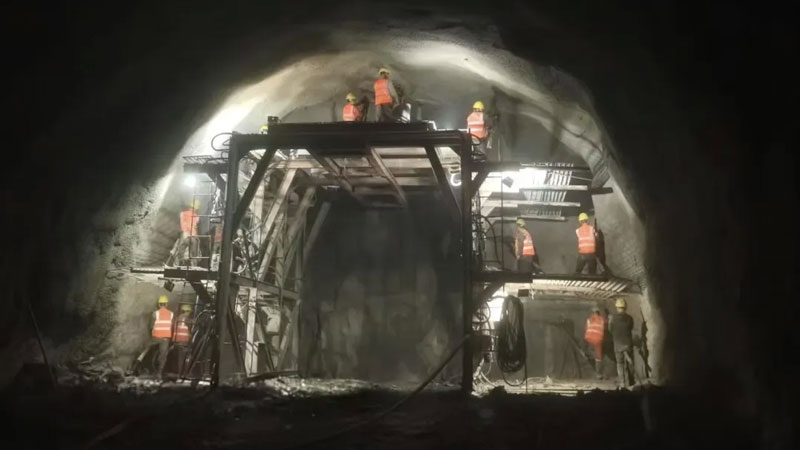Chinese Go Underground to Find Place to Store Energy in Compressed Air


The project of storing energy in compressed air, tested in Germany in the 1970s, has received a second wind in the era of renewable energy sources. Their intermittent nature of generation requires storage capacities so that the supply of electricity is not interrupted at night and in windless weather. In China, the idea of pumping air into underground caves in order to then use the compressed gas to generate energy has been actively picked up. However, natural caves are running out, but the demand for them remains.


Image source: China Energy Storage
The lack of caves for storing energy in compressed air has forced the Chinese to drill artificial underground reservoirs, which requires the development of a whole range of technologies to ensure the reliability of cyclopean underground structures and prevent leaks. In addition, conditions for storing air with higher pressure than in natural caves can be created underground.
China’s first large-scale compressed air energy storage (CAES) project using a fully man-made underground cavern has begun, a major step toward commercializing the technology, sources said.
The project is being developed by a state-owned consortium and is being implemented with the support of local state-owned enterprise Xinyang Construction Investment Group, CAES technology specialist China Energy Storage National Engineering Research Center (China Energy Storage) and two other state-owned investment companies.
The complex is scheduled to be commissioned in 2026. It will have a capacity of 300 MW and store 1,200 MWh of energy. The cost of the project is estimated at 2.15 billion yuan ($300 million). Underground work involves opening and equipping a cave with a diameter of 15 m and a length of 1,800 m. This is a capacity of 318 thousand m³. In a compressed state, it will hold much more air. The declared working pressure of the artificial cave will be at the level of 14 MPa, which will allow more than 50 million m³ of atmosphere to be pumped into it. Alexander Belyaev’s fears about the appearance of “air sellers” are becoming more real.
To keep the air underground under pressure and without leaks, technologies have been developed to strengthen the structure, concrete lining and sealed steel layer. As of December 2024, about 400 meters of the transport tunnel have been built, which is almost 80% of the planned volume of work. Excavation work is also already underway in the storage facility.
Once operational, the energy conversion efficiency is expected to be 72.1% and the capacity to be 420 million kWh per year, enough to power 350,000 households. The system includes multi-stage compressors, high-load turbines and advanced heat exchangers. The latter eliminates the need to heat the air using fossil fuels, capturing heat through recuperation, making the project environmentally friendly. The success of the project will pave the way for similar projects to be built everywhere.
Recent Posts
SnowRunner creators’ ‘revolutionary’ RoadCraft simulator earns ‘mixed’ reviews on Steam release
As promised, the “revolutionary” construction simulator RoadCraft from Saber Interactive (SnowRunner, Expeditions: A MudRunner Game)…
Google has taught Meet to translate speech on the fly while preserving intonation and tone of voice
Google unveiled a new live translation feature for its Google Meet video conferencing service at…
CMF Phone 2 Pro Review: Still Surprising
Last year, Nothing introduced the first smartphone under its budget sub-brand CMF by Nothing. The…
Google Chrome Will Start Automatically Changing Weak or Hacked Passwords, But Will Ask for Permission First
At Google I/O, the company announced a new feature in Chrome that will automatically update…
The End of Silent AI Video: Google Unveils Veo 3, the First Video Generator with Sound
Google presented the latest AI model for generating videos from text descriptions, Veo 3, at…
GTX 750 Ti is no longer enough for the game: Ubisoft announced the system requirements of Rainbow Six Siege X
Publisher and developer Ubisoft has revealed the system requirements for Tom Clancy's Rainbow Six Siege…